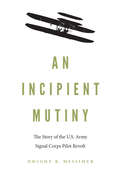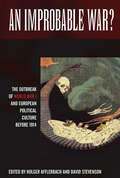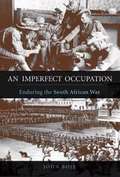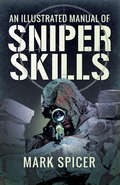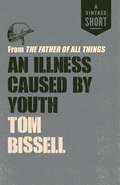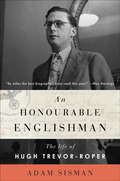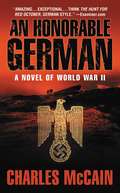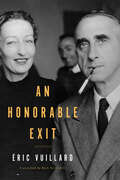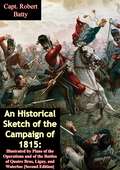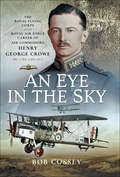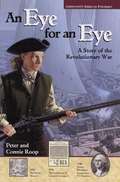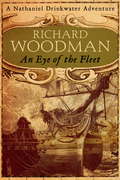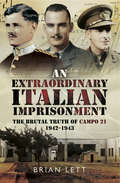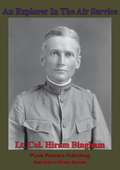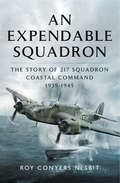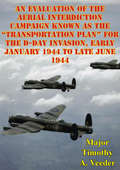- Table View
- List View
An Infamous Marriage
by Susanna FraserNorthumberland, 1815At long last, Britain is at peace, and General Jack Armstrong is coming home to the wife he barely knows. Wed for mutual convenience, their union unconsummated, the couple has exchanged only cold, dutiful letters. With no more wars to fight, Jack is ready to attempt a peace treaty of his own.Elizabeth Armstrong is on the warpath. She never expected fidelity from the husband she knew for only a week, but his scandalous exploits have made her the object of pity for years. Now that he's back, she has no intention of sharing her bed with him-or providing him with an heir-unless he can earn her forgiveness. No matter what feelings he ignites within her...Jack is not expecting a spirited, confident woman in place of the meek girl he left behind. As his desire intensifies, he wants much more than a marriage in name only. But winning his wife's love may be the greatest battle he's faced yet.88,000 words
An Indecent Obsession
by Colleen McCulloughTo the battle-broken soldiers in her care, nurse Honour Langtry is a precious, adored reminder of the world before war. Then Michael Wilson arrives under a cloud of mystery and shame to change everything.
An Incipient Mutiny: The Story of the U.S. Army Signal Corps Pilot Revolt
by Dwight R. MessimerAn Incipient Mutiny traces the creation of the U.S. Army Signal Corps Aeronautical Division in 1907 up to the establishment of the Air Service of the National Army in 1918. It is a shocking account of shortsightedness, mismanagement, criminal fraud, and cover-up that led ultimately to a pilot revolt against the military establishment. Dwight R. Messimer focuses on the personalities of the pilots who initiated the rebellion and on the Signal Corps officers whose mismanagement brought it on. The official air force histories say nothing about the poor construction and design flaws in the airplanes that the Signal Corps used, which were responsible for the deaths of 25 percent of the pilots, a death rate so high that no life insurance company would issue them a policy. At the same time, there were airplanes on the market that were superior in every way to the planes the army was using and less expensive as well. The loss of human life, then, could not have been more senseless.
An Improbable War?
by David Stevenson Holger AfflerbachThe First World War has been described as the "primordial catastrophe of the twentieth century." Arguably, Italian Fascism, German National Socialism and Soviet Leninism and Stalinism would not have emerged without the cultural and political shock of World War I. The question why this catastrophe happened therefore preoccupies historians to this day. The focus of this volume is not on the consequences, but rather on the connection between the Great War and the long 19th century, the short- and long-term causes of World War I. This approach results in the questioning of many received ideas about the war's causes, especially the notion of "inevitability."
An Imperfect Occupation: Enduring the South African War
by John BojeThe South African War (1899-1902), also called the Boer War and Anglo-Boer War, began as a conventional conflict. It escalated into a savage irregular war fought between the two Boer republics and a British imperial force that adopted a scorched-earth policy and used concentration camps to break the will of Afrikaner patriots and Boer guerrillas. In An Imperfect Occupation , John Boje delves into the agonizing choices faced by Winburg district residents during the British occupation. Afrikaner men fought or evaded combat or collaborated; Afrikaner women fled over the veld or submitted to life in the camps; and black Africans weighed the life or death consequences of taking sides. Boje's sensitive analysis showcases the motives, actions, and reactions of Boers and Africans alike as initial British accommodation gave way to ruthlessness. Challenging notions of Boer unity and homogeneity, Boje illustrates the precarious tightrope of resistance, neutrality, and collaboration walked by people on all sides. He also reveals how the repercussions of the war's transformative effect on Afrikaner identity plays out in today's South Africa. Readable and compassionate, An Imperfect Occupation provides a dramatic account of the often overlooked aspects of one of the first "modern" wars.
An Illustrated Manual of Sniper Skills
by Mark SpicerThis heavily illustrated manual offers an in-depth look at the art of sniping in war and anti-terrorist environments. Drawing on a vast, firsthand knowledge of sniper skills, former British Army sniper and sniper instructor Mark Spicer describes the role of the sniper in peace and in war, in reconnaissance and counter-surveillance, in cities, in vehicles, at night and by day. He presents crucial information about training and equipment, judgment and positioning, details of great relevance to professional marksmen, both military and law enforcement. This comprehensive manual will also be of interest to hunters, weapons enthusiasts, competition shooters, and paintball participants. The authoritative text is complimented by 280 full color illustrations, diagrams, and related information.
An Illness Caused by Youth: from The Father of All Things
by Tom BissellVeteran Jack Bissell only deepened the abyss between him and his son Tom when he talked about the Vietnam war. But, when a magazine editor sends the two back to Vietnam for a story, Tom reopens the conversation and confronts his father’s past and the man that had seemed impossibly remote. Part history, memoir, and travelogue, Tom Bissell’s is a haunting, riveting exploration of the war’s personal, political, and cultural impact from the perspective of the generation that grew up in the wake of the conflict and a wise reckoning of the bond forged between fathers and sons. A Vintage Shorts Vietnam Selection. An ebook short.
An Illicit Temptation (Chinese Tang Dynasty)
by Jeannie LinTang Dynasty China, 824 A.D.Dao was raised as a servant, but when her half-sister flees an arranged marriage to a chieftain, Dao is sent in her place as Princess An-Ming. Such a future is better than she could have hoped for, yet she dreads a passionless union with a stranger.Taken as a virtual hostage to the Imperial court, Kwan-Li is torn between his people and his duty to the emperor. He is bound by honor to escort the princess safely across the wild and untamed steppe, but the greatest danger they face on the long journey may be the forbidden temptation of each other...
An Ill Wind (Security Specialists International #5)
by Monette MichaelsA damaged woman fleeing her past. After being stalked then attacked by a colleague, Dr. Fiona Teague flees to a New Mexico border town. Working in a clinic, Fee endeavors to overcome the horror of that night. To her dismay, Trey Maddox, her brother’s friend, refuses to be deterred from pursuing a relationship with her. If only she weren’t so broken … Trey’s everything a woman could want—honorable, strong, heroic, but he deserves better than a damaged woman. A strong, capable protector determined to lure her into the shelter of his arms. During an Idaho blizzard, SSI operative Trey Maddox met Fee over the barrel of a rifle as she protected his pregnant sister-in-law. The gutsy little doc then ignored her own physical injuries to deliver his nephew. How could Trey not fall for her? Before he could persuade her to stay in Idaho, she’d cut and run to New Mexico. Undeterred by the distance, he pursues her, eroding her resistance with patience and tenacious good humor. And, finally, she agrees to an actual “date.” But the ill wind that had destroyed her once before now sweeps through Fee’s life again. She’s kidnapped by a drug cartel. Trey arrives to find her house a bloody crime scene. The cartel has no idea of the ruthless hunter they’ve unleashed. Trey will storm hell itself in order to rescue Fee and make her his, once and for all.
An Ideal Companion: Scars Of Betrayal Surrender To The Viking An Ideal Companion
by Anne AshleyAfter her employer mysteriously dies, a young woman must team up with a dashing colonel to uncover the truth and clear her name.When an unseasonable snowstorm brings an assortment of stranded travelers to Lady Beatrice Lindley’s door, companion Miss Ruth Harrington welcomes them in, flustered though she is by the towering presence of Colonel Hugo Prentiss. But the next morning, Ruth’s quiet existence on the moor is shattered—Lady Beatrice is dead!Convinced there’s more to her employer’s demise than meets the eye, Ruth seeks the one man who can help her uncover the truth—the enigmatic Colonel. But in a world where nothing is what it seems, can Ruth and Hugo come to put their trust in each other?
An Honourable Englishman
by Adam SismanHe was one of the most gifted scholars of his generation--a brilliant writer, high-society star, and cultural force who moved easily between aristocratic houses and the humble haunts of literary bohemia. He developed a lucid prose style that he used to scathing effect, earning notoriety for his sharp attacks on other historians. Now this superb biography of Hugh Trevor-Roper, universally acclaimed overseas, makes its anticipated American debut.With incisive knowledge of the man and access to never-before-published letters, Adam Sisman paints a fascinating portrait of this charismatic, contentious, contradictory character. Sisman examines Trevor-Roper's middle-class upbringing in a house so empty of affection that it caused, as he put it, his "almost physical difficulty in expressing emotion." He traces Trevor-Roper's career from his early academic triumphs to his later failure to produce the big book expected of him.Sisman also provides riveting new details of the high drama of Trevor-Roper's World War II intelligence work--in which he boldly blew the whistle on bureaucratic infighting that imperiled British code-breaking--and the exclusive investigation of Hitler's death that inspired his bestselling postwar triumph, The Last Days of Hitler. As never before, Trevor-Roper's personal life is explored, including his passionate affair with an older, married woman. Finally, An Honourable Englishman reveals the truth behind his public substantiation of the false Hitler diaries in 1983, a misstep (encouraged by his impatient employer Rupert Murdoch) that forever tainted his reputation.Profoundly bright and brutally acerbic, Hugh Trevor-Roper was a literary lion like no other, and in An Honourable Englishman he receives the absorbing biography he deserves.From the Hardcover edition.
An Honorable German
by Charles MccainIn the tradition of Das Boot and The Hunt for Red October comes a sweeping saga of World War II, featuring a heroic and conflicted German U-Boat commander. An Honorable German When World War II begins, Max Brekendorf, a proud young German naval officer, fights for his country with honor and courage. With the unstoppable German war machine overrunning Europe, Max looks ahead to a bright future with his fiancee, Mareth. But as the war progresses, their future together becomes less and less certain. German victories begin to fade. In the North Atlantic, Max must face the increasing strength of the Allies on ever more harrowing missions. Berlin itself is savaged by bombing, making life for Mareth increasingly dangerous and desperate. And as the Third Reich steadily crumbles, Nazi loyalists begin to infiltrate Max's crew and turn their terror on Germany's own armed forces. Recognizing what his nation has become, Max is forced to make a choice between his own sense of morality, and his duty to the Reich. With its stirring, rarely seen glimpse of the German home front during WWII, vivid characters, and evocation of the drama and terror of war at sea, An Honorable German is a suspense-filled story of adventure, of love and loss, and of honor and redemption.
An Honorable Exit
by Éric VuillardFrom the award-winning author of The Order of the Day, a piercing account of the lesser-known conflict preceding the Vietnam War that dealt a fatal blow to French colonialism.How can a modern army lose to an army of peasants? Delving into the last gasps of the First Indochina War (1946–1954), which saw the communist Việt Minh take control of North Vietnam, Éric Vuillard vividly illustrates the attitudes that both enabled French colonialist abuses and ultimately led to their defeat and withdrawal. From the Michelin rubber plantation, where horrific working conditions sparked an epidemic of suicides, to the battlefield, a sense of superiority over the &“yellow men&” pervaded European and American forces. And, as with so many conflicts throughout history, there were key actors with a motivation deeper than nationalism or political ideology—greed. An Honorable Exit not only brings to life scenes from the war, but also looks beyond the visceral reality on the ground to the colder calculations of those who seek to benefit from conflict, whether shrewd bankers, who can turn a military win or loss into financial gain, or intelligence operatives like the CIA, who aim to influence governments across the globe.
An Historical Sketch of the Campaign of 1815: Illustrated by Plans of the Operations and of the Battles of Quatre Bras, Ligny, and Waterloo [Second Edition]
by Lt.-Col. Robert BattyIn this volume Lt.-Col. Batty recounts his memories of the Waterloo campaign in 1815 which he witnessed firsthand. As an officer on the staff he was ideally placed to write on the subject and added a great deal from enquiries that he made of other officers that he was acquainted with.Lieutenant-Colonel Robert Batty (5 August 1789 - 20 November 1848) was an English army officer and artist.He was born in 1789, the son of Dr. Batty of Hastings and started to study medicine at Caius College, Cambridge, being awarded an M.B. in 1813. He left his studies to join the Grenadier Guards (then the 1st Foot Guards), with whom he served in the campaign of the Western Pyrenees and at Waterloo, where he was wounded and wrote an account of the Battle of Waterloo in a series of letters.
An Eye in the Sky: The Royal Flying Corps and Royal Air Force Career of Air Commodore Henry George Crowe MC, CBE, CBD (SC)
by Bob CosseyThis is the biography of Henry Crowe whose career encompassed time as an infantryman with the Royal Irish Regiment during the First World War, an observer with the RFC and fledgling RAF, a pilot in Ireland at the time of the Irish War of Independence, a photographic officer and flight commander in Iraq, and Commanding Officer of Nos. 23 and 74 Squadrons. His memories of time spent in Iraq and on the North West Frontier between the wars have a real resonance today, illustrating just how little has changed in some respects.Henry served at the Air Ministry in various positions and concluded his service with the RAF in India, retiring as an Air Commodore in 1945. He had a keen interest in photography and took hundreds of images of the places he served, the aircraft he flew and saw, and the people he met. With an early Bell and Howell cine camera he also captured film of Malta, Iraq and India between the wars. As a photographic record alone this book is fascinating. But Henry wrote about his experiences as well and it is his memoirs that form the backbone of this biography, written with the full backing of his family.Henry Crowe was highly decorated and especially well thought of during the course of his career; reading Bob Crosseys account of his fascinating life, it is clear to see why.
An Eye for an Eye
by Peter Roop Connie RoopTeen fictional story about a girl in the original 13 colonies who goes after her brother, who's imprisoned on a British ship.
An Eye for Glory: The Civil War Chronicles of a Citizen Soldier
by Karl A. BaconMichael palmer is a good man, a family man. But honor and duty push him to leave his comfortable life and answer the call from Abraham Lincoln to fight for his country. This “citizen soldier” learns quickly that war is more than the battle on the field. Long marches under extreme conditions, illness, and disillusionment challenge at every turn. Faith seems lost in a blur of smoke and blood … and death. Michael’s only desire is to kill as many Confederate soldiers as he can so he can go home. He coldly counts off the rebels that fall to his bullets. Until he is brought up short by a dying man holding up his Bible. It’s in the heat of battle at Gettysburg and the solemn aftermath that Michael begins to understand the grave cost of the war upon his soul. Here the journey really begins as he searches for the man he was and the faith he once held so dearly. With the help of his beloved wife, Jesse Ann, he takes the final steps towards redemption and reconciliation.Using first-hand accounts of the 14th Connecticut Infantry, Karl Bacon has crafted a detailed, genuine and compelling novel on the 150th anniversary of the Civil War. Intensely personal and accurate to the times, culture, and tragedy of the Civil War, An Eye for Glory may change you in ways you could have never imagined as well.
An Eye Of The Fleet: Number 1 in series (Nathaniel Drinkwater #1)
by Richard WoodmanNathaniel Drinkwater's life at sea begins with the HMS Cyclops' capture of the Santa Teresa during Admiral Rodney's dramatic Moonlight Battle of 1780. Drinkwater's courage and initiative are put to the test as the Cyclops pursues American privateers threatening British trade and he is later dispatched to the swamps of South Carolina, where many lives are lost both at sea and ashore. Gradually, Drinkwater matures into a capable and self-assured sailor. As he contends with enemy forces, the tyranny of the Cyclops's midshipman, and the stark contrast between the comfort of home life and the brutality of naval service, he finds strength and sustenance in the love of his beloved Elizabeth.
An Extraordinary Italian Imprisonment: The Brutal Truth of Campo 21, 1942–3
by Brian LettThis book tells the story of prisoner of war camp PG 21, at Chieti, Italy, between August 1942 and September 1943. It was grossly overcrowded, with little running water, no proper sanitation, and in winter no heating.Conditions (food/clothing) for POWs were so bad that they were debated in the House of Commons.The prisoners suffered under a violently pro-Fascist regime. The first Commandant personally beat up one recaptured escaper. A pilot was murdered by an Italian guard following his escape attempt. Tunnels were dug, and the prisoners were even prepared to swim through human sewage to try and get out. Morale in the camp remained remarkably high. Two England cricket internationals staged a full scale cricket match. Theatre and music also thrived.After the Italian Armistice, in September 1943, the British Commander refused to allow the ex-prisoners to leave camp. Germans took over the camp, and most prisoners were transported to Germany. Some managed to hide, and more than half of these subsequently escaped. After the war, a number of the Camp staff were arrested for war crimes.
An Exquisite Corpse: Death In Surrealist New York (Art of Murder Mysteries #1)
by Helen HarrisonMurder is a work of art...When the acclaimed Cuban painter Wifredo Lam turns up dead in his Greenwich Village studio, officers Juanita Diaz and Brian Fitzgerald of the NYPD, must investigate the crime. But what they find is much more gruesome than they ever could have imagined.Suspicion soon falls on a tight-knit circle of Surrealist refugees who fled Nazi-occupied Europe during World War II, and Diaz and Fitzgerald must traverse the city, from Chinatown's underworld to Spanish Harlem's gangland, to find the truth. Did one of the artists' bizarre parlor games turn deadly? Or is there something even more sinister afoot?"Smart, witty, filled with so much history of the period, beautifully written, and suspenseful."—Jonathan Santlofer, author of The Death Artist
An Explorer In The Air Service [Illustrated Edition]
by Lt. Colonel Hiram BinghamHiram Bingham was a visionary, widely acknowledged in his own time for his talents as an academic, explorer and United States senator. Hailing from Hawaii, where his family before and since have provided much public service, and an expert in South American history, he became world famous for his 'discovery' of the Quecha capital, Machu Picchu.His amazing breadth of service also encompassed service in the national guard, and he became an aviator and organized the United States Schools of Military Aeronautics at eight universities to provide ground school training for aviation cadets. Head of the famed Third Aviation Instruction Center at Issoudun in France, he was responsible for the training of pilots from initial flying to advanced pursuit training. Accompanied by many notes and diagrams of the tactics, schemes and manoeuvres (many illustrated) used in the air war over France, these memoirs from his days as head of the Training school make for fascinating reading.Author -- Lt. Col. Bingham, Hiram, 1875-1956.Text taken, whole and complete, from the edition published in New Haven, Yale university press; [etc., etc.] 1920.Original Page Count - xiv, 260 pages.Illustrations -- numerous illustrations and maps.
An Expendable Squadron: The Story of 217 Squadron, Coastal Command, 1939–1945
by Roy Conyers NesbitRoy Nesbit's highly illustrated history of Coastal Command's 217 Squadron the squadron in which he served gives a first-hand insight into the hazardous low-level missions the squadron flew against enemy shipping and ports during the Second World War. He chronicles the squadron's operations from the outbreak of war when it patrolled in Avro Ansons over the Western Approaches to the English Channel. Then came the most intense period of its wartime career when, flying Beauforts, it concentrated on minelaying and attacks on shipping along the west coast of German-occupied France. It also mounted daring raids on huge U-boat bunkers and other enemy installations. The story of these dangerous operations, in which many aircraft were lost and airmen were killed, makes up the most memorable section of the narrative. But Roy Nesbit takes the squadron's story right through to the later years of the war when, after a short and even more dangerous period flying from Malta in order to sink enemy shipping in the Mediterranean, it was based in Ceylon and was re-equipped with Beaufighters for the battle against the Japanese. In addition to telling the story of the squadron and the men who served in it, the narrative describes the conditions endured by the French people in the ports 217 attacked, and it covers the raids launched against German coastal bases after the squadron had moved to the Far East. An Expendable Squadron will be absorbing reading for anyone who has a special interest in the history of Coastal Command, in the aircraft 217 Squadron flew, and in the experience of combat flying seventy years ago.
An Executive Perspective on Workforce Planning
by John Arquilla Cheryl Y. Marcum David R. Frelinger Albert A. Robbert Donna Fossum Robert M. EmmerichsWorkforce planning is an activity intended to ensure that investment in human capital results in the timely capability to effectively carry out an organization's strategic intent. This report examines how corporate executives can provide guidance from the top of the organization to the business units that actually carry out the organization's activities so that the strategic is successfully realized.
An Everyday Hero: A Heart Of A Hero Novel (Heart of a Hero #2)
by Laura TrenthamFrom award-winning author Laura Trentham comesan emotionally layered novel about redemption, second chances and discovering that life is worth fighting for.At thirty, Greer Hadley never expected to be forced home to Madison, Tennessee with her life and dreams up in flames. A series of bad decisions and even worse luck lands her community service hours at a nonprofit organization that aids veterans and their families. Greer cannot fathom how she’s supposed to help anyone deal with their trauma and loss when everything that brought her joy has failed her. Then Greer meets fifteen-year-old Ally Martinez, a gifted girl who lost her father in action and now hides her pain behind a mask of sarcasm. But Greer sees something undeniable that she can’t walk away from. To make matters more complicated, Greer finds herself spending more and more time with Emmett Lawson—a man with both physical and emotional scars of his own. When a situation with Ally becomes dire, the two of them must become a team to save her—and along the way they might just save themselves too.
An Evaluation Of The Aerial Interdiction Campaign Known As The “Transportation Plan” For The D-Day Invasion: Early January 1944 To Late June 1944
by Major Timothy A. VeederThe various airmen leading the air war had great differences of opinion regarding what to target in the European theater of operations in support of Operation Overlord. The central leadership figures were Lt. General Carl Spaatz, USSTAF commander, and Air Chief Marshal Trafford Leigh-Mallory, AEAF commander. Each of these military men obviously wanted to support the planned Allied invasion, but they held differing opinions in regard to how to best support the invasion troops. They were greatly influenced by both personal experience and the advice of their respective scientific advisors, Walt W. Rostow and Dr. Solly Zuckerman. Also, Air Marshal Tedder, Deputy Supreme Allied Commander, and Air Marshal Harris, Commander of the RAF Bomber Command, contributed to the decisions to carry out the transportation interdiction campaign.This research focuses on the period January 1944 through the end of June 1944. It includes a literature review of published memoirs and historic accounts of the individuals involved in the decision to implement the transportation plan. The archives of the Air Force Historical Research Agency were accessed to obtain actual accounts and directives implementing the pre-D-Day interdiction campaign. Numerous facts support a discussion of each of the airmen's interests and the controversy that surrounded the transportation campaign.The implementation of the transportation interdiction campaign resulted in the successful denial of German reinforcements to the Normandy beachhead.


